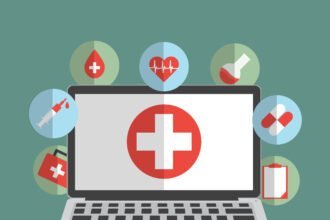Predicting the future is a risky game; too often, the prognosticator is wrong. But the exercise can be valuable, because it forces an analysis of forces driving technological and other change, and of what challenges may lay in the path of change.
Predicting the future is a risky game; too often, the prognosticator is wrong. But the exercise can be valuable, because it forces an analysis of forces driving technological and other change, and of what challenges may lay in the path of change.
Recently, an infographic on emerging technology published in MedCity News charted several paths that predict how (and how quickly) technological change is likely to occur; this infographic included healthcare innovations. While the graphic resembles the independent lanes of an electrophoresis gel (or an Olympic swimming pool for those of you who may have spent less time in the lab), many of the technological advances profiled are intertwined: for example, telepresence (predicted for 2024) could merge with certain advances in robotics as well as the advent of synthetic biology to develop a remote way of delivering cell therapy that was created entirely in a laboratory.
Some other future innovations that affect healthcare (especially digital health):
- Biometric sensors (predicted to arrive in 2016): there is a lot of activity around developing in-home patient monitoring, and many stakeholders are comparing the costs versus benefits of home monitoring versus hospital-based care. Sensors could capture vital health information at home, and alert a caregiver of any significant changes. The caregiver could then make some adjustments immediately (changing medication dosages, for example), preventing worsening symptoms that require a hospital admission. While a promising area, technology infrastructure must be a key part of this advancement.
- Personalized medicine (predicted for 2020): we have started to see the benefits of personalized medicine, with the costs of personal genome sequencing approaching $1,000, and with FDA approvals of a number of personalized medicines and companion diagnostic tests. This field will advance rapidly, accelerating due to consumer demand, and adoption rates by practitioners and coverage rates by insurers (assuming proof of cost effectiveness) will follow suit.
- Biomarkers (due for 2018): obviously, many biomarkers are known today, including those that determine responders from non-responders (i.e., those patients who may or may not respond to certain drugs). In cancer chemotherapy, the drugs Erbitux and Vectibix are not recommended for treating tumors that contain KRAS mutations because of the lack of clinical efficacy. Utilization of the biomarker test for KRAS can then help eliminate some costly treatments that may have no effect on patient outcomes. Thousands of biomarkers have yet to be connected to a disease state (another form of prediction); but, as with personalized medicine, consumer demand for these biomarker-based approaches can accelerate innovation.
Each of us may have different ideas on which technology will have the greatest impact and whether it will be adopted by consumers. At Popper and Company, we work with many life science clients whose innovations and products extend into these new areas—personalized medicine, stem cells, biosensors, and digital health. It’s a matter of time, and relevance, before these become state-of-the-art systems, devices or drugs.
Do these predictions seem accurate to you? What would accelerate (or impede) their development? Are there other technological areas that look more promising in terms of their impact on healthcare? Let us know what you think.






